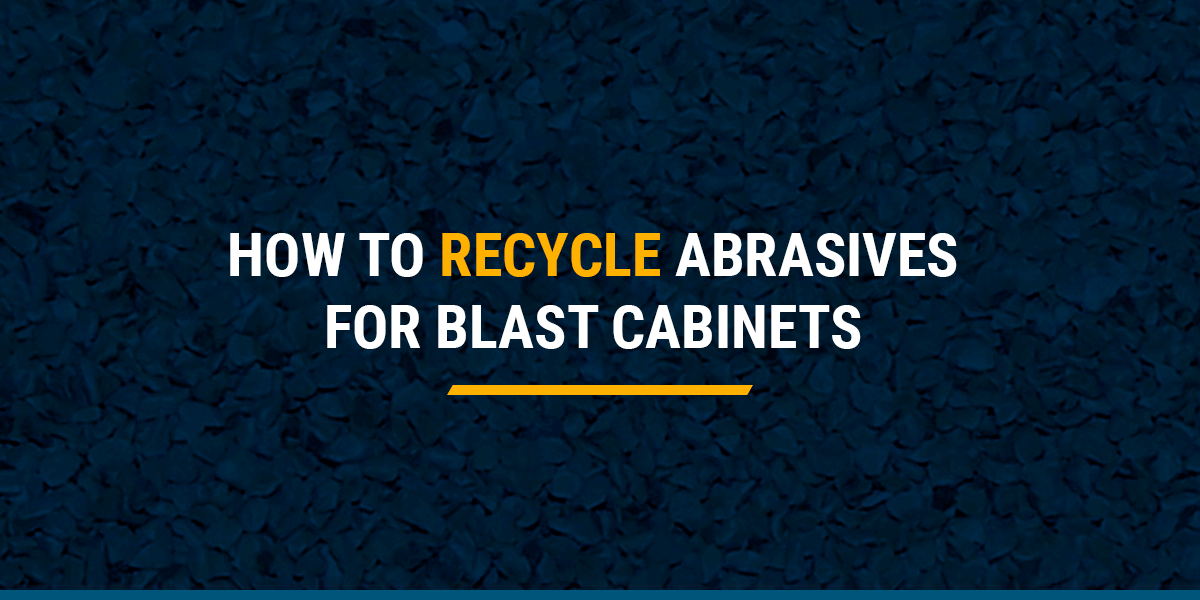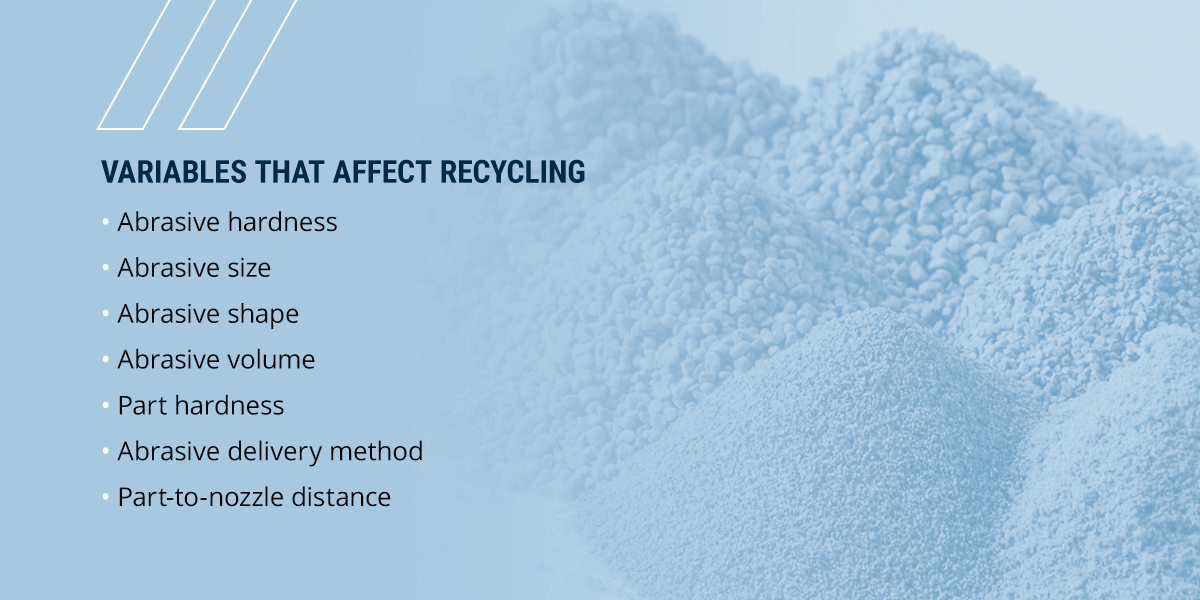
How to Recycle Abrasives for Blast Cabinets
Last Updated: February 14, 2022
Are you using a blast cabinet for your finishing projects? One smart way to save money and reduce waste is by recycling your abrasives. Simply reuse the same media by running it through the blast cabinet multiple times, effectively giving it a second (or third, or fourth) life.
But why should you bother recycling abrasives, and what do you need to keep in mind before you dive in? We've put together this guide to help you understand the ins and outs of recycling abrasives in your blast cabinet.
Why Recycle Your Abrasives?
One of the biggest advantages of recycling abrasives is cost savings. Fresh abrasives can be quite pricey, especially if you're dealing with larger quantities. By reusing your old abrasives, you can cut down significantly on your blast cabinet media expenses. This can add up to substantial savings over time.
Another great reason to recycle abrasives is the positive environmental impact. Many types of abrasives, such as walnut shells or glass, don’t break down easily in landfills. Recycling your blast cabinet media helps reduce waste and minimizes your environmental footprint. Plus, some blasting materials contain plastics that can release harmful chemicals into the soil if not disposed of properly. Recycling ensures you're doing your part to protect the planet.
Key Considerations Before Recycling
Before you start recycling abrasives, there are several factors to think about to ensure you're maximizing the benefits. Here's what you need to keep in mind:

Factors That Influence Recycling
Here are some key variables that affect how effectively you can recycle your abrasives:
- Abrasive Hardness: The hardness of your blasting media plays a big role in its recyclability. Materials with higher ratings on the Mohs Hardness Scale tend to hold up better under repeated use.
- Abrasive Size: Smaller abrasives wear down faster and may require more frequent replacement. Larger particles typically last longer but can also cause more wear on your blast cabinet.
- Abrasive Shape: The shape of your abrasive can influence its durability. For instance, while glass is softer than many abrasives, its round shape means it can withstand more impacts without breaking down as quickly.
- Abrasive Volume: Higher volumes of abrasive moving through your cabinet generate more heat, which can speed up wear and tear. Monitoring this can help you optimize your recycling process.
- Part Hardness: Parts with higher hardness levels tend to wear abrasives faster, which can limit the number of recycles you can achieve.
- Blasting Method: Whether you're using a pressure pot or a siphon system can affect the speed and effectiveness of your abrasive recycling. Different methods result in varying blast pressures and abrasive speeds.
- Nozzle-to-Part Distance: The distance between the nozzle and the part being blasted impacts the force of impact. Shorter distances increase the impact velocity, which can reduce the number of recycles.
Important Factors to Keep in Mind
Before starting your recycling journey, here are some essential considerations:
- Type of Abrasive: Make sure the abrasive you're using is designed for multiple uses. Single-pass abrasives won't hold up well under repeated cycles. Look for abrasives labeled for multiple use.
- Lifespan of Your Abrasive: The lifespan depends on the abrasive's hardness and size. Harder abrasives like steel shot or silicon carbide can last dozens of cycles, while softer ones like garnet may only last a few uses. Choose wisely based on your project requirements.
- External Variables: Other factors, like part hardness or high blasting pressure, can affect how many times you can recycle your abrasive. Be realistic about what your setup can handle.
- Blast Cabinet Design: Not all blast cabinets are created equal when it comes to recycling. Cabinets with features like separators or reclaimers can improve your recycling efficiency significantly.
Rules for Reusing Abrasives
Here are some practical guidelines to follow when recycling abrasives:
- Stick to Hard Abrasives: Soft abrasives like sand or slag tend to break down quickly and can clog your dust collector. Opt for harder abrasives that can withstand multiple cycles.
- Understand Maximum Impact Velocity: Different abrasives have different maximum impact velocities. Knowing this helps you avoid prematurely wearing out your media and reduces the risk of contamination.
- Estimate Recycles: While the exact number of recycles depends on various factors, estimating how many cycles your abrasive has been through can help you decide when to switch to fresh media.
- Invest in Quality Separator Reclaimers: A good separator reclaimer is crucial for keeping your abrasive clean and effective. Poorly designed reclaimers can lead to contamination and reduced performance.
- Know When to Replace: Just like sandpaper, using worn-out abrasives reduces efficiency. Regularly check your media and replace it when necessary to maintain optimal blasting performance.
Trusted Finishing Solutions From Finishing Systems
Ready to start recycling your blast cabinet abrasives? Partner with Finishing Systems for top-notch solutions. We offer a wide range of abrasives tailored to meet your finishing needs, including those designed for multiple uses. Additionally, our selection of blast cabinets caters to various media types and applications.

Mist Eliminators
Mist Eliminators,Vane Mist Eliminator Filter,Wire Mesh Mist Eliminator,Ptfe Mist Eliminator Demister
Wuxi Qijing Machinery Technology Co., Ltd. , https://www.sinombbrmedia.com
